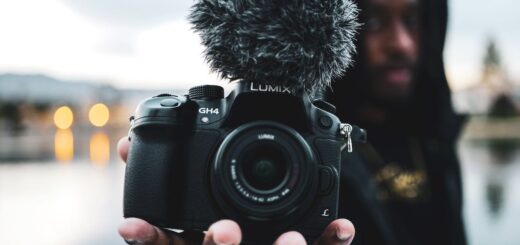Top Camera Lens Secrets Every Photographer Should Know
In the world of photography, mastering the secrets of camera lenses is crucial in capturing stunning images. This article aims to provide you with valuable information on various types of camera lenses and their features, ultimately helping you improve your photography skills. With insider tips, expert advice, and practical examples, you’ll be well on your way to becoming a better photographer. So, let’s dive into the top camera lens secrets every photographer should know.
Table of Contents
- Understanding Different Types of Lenses
- Important Lens Features to Consider
- Composition Tips: Enhancing Photos with Lenses
- Proper Care and Maintenance of Your Lenses
- Creative Techniques for Lens Use
- When to Upgrade Your Lenses
1. Understanding Different Types of Lenses
Different types of lenses can greatly affect the outcome of your photos. Each lens has its unique characteristics and applications. Here are the most common types of lenses and when to use them:
- Standard Lenses: These lenses typically have a focal length between 35mm and 70mm. They are suitable for general photography and closely mimic the human eye’s perspective.
- Wide-angle Lenses: With a focal length ranging from 10mm to 35mm, wide-angle lenses allow for a broader field of view, making them perfect for landscape, architecture, and interior photography.
- Telephoto Lenses: These lenses have a focal length of 70mm or more and are ideal for wildlife, sports, and portrait photography. Telephoto lenses allow you to capture subjects from a distance and isolate them from their backgrounds.
- Macro Lenses: Macro lenses are specially designed for close-up photography, enabling you to capture detailed images of small subjects like flowers, insects, and jewelry.
- Prime Lenses: A prime lens has a fixed focal length and is typically sharper and faster than zoom lenses. They force you to move to compose your shot, resulting in more creative and well-thought-out images.
- Zoom Lenses: Zoom lenses offer a range of focal lengths, providing flexibility and convenience for various shooting scenarios. However, they generally don’t perform as well as prime lenses in terms of image quality and low-light performance.
2. Important Lens Features to Consider
When choosing a camera lens, understanding their key features can make a significant difference in your photography. Here are the critical characteristics to consider:
- Aperture: The aperture determines the amount of light that is allowed to enter the camera. A lens with a wide aperture (low f-number) allows more light to pass through, enabling you to shoot in low-light conditions and achieve a shallow depth of field.
- Image Stabilization: Image stabilization helps reduce camera shake, allowing for sharper images at slower shutter speeds. This feature is particularly useful for telephoto lenses and low-light shooting.
- Manual Focus: Although autofocus is convenient, having the option to switch to manual focus can be invaluable, especially in situations where the autofocus struggles to lock on to the subject.
- Weather-Sealing: Weather-sealed lenses offer protection against dust, moisture, and other environmental factors, providing better durability and longevity.
3. Composition Tips: Enhancing Photos with Lenses
The right choice of lens can significantly impact the composition of your photos. Here are some tips to enhance your images using various lenses:
- Leading lines: Use wide-angle lenses to capture leading lines in your compositions, drawing the viewer’s eye towards your main subject.
- Background Compression: Telephoto lenses help compress the background, isolating your subject and making them appear closer to the elements behind them.
- Bokeh: Use lenses with wide apertures to create a beautiful, soft background blur known as bokeh, which helps draw attention to your main subject.
- Perspective Control: Experiment with different focal lengths to manipulate the perspective of your images. For example, use a wide-angle lens to exaggerate the size of the foreground elements while diminishing the background.
4. Proper Care and Maintenance of Your Lenses
Proper lens care is vital to ensure the longevity and optimal performance of your gear. Here are some guidelines to follow:
- Cleaning: Always use a clean, lint-free cloth or lens cleaning tissue to gently wipe your lenses. Avoid using your shirt or other materials that could scratch the glass.
- Storage: Invest in lens caps and padded cases to protect your lenses from scratches, dust, and impact during storage and transportation.
- Handling: Avoid touching the lens glass with your fingers and always hold the lens by its sides. This prevents fingerprints and smudges from affecting image quality.
- Temperature: Avoid exposing your lenses to drastic temperature changes, as condensation can form inside the lens, potentially causing damage or mold growth.
5. Creative Techniques for Lens Use
Experimenting with different lenses and techniques can help you achieve unique and striking images. Here are some creative ideas to try:
- Freelensing: Detach your lens from the camera body and hold it close to the lens mount, allowing light to leak in and create an interesting blur effect.
- Reverse macro: Use a reverse lens adapter to mount your lens backward on the camera body, transforming it into a makeshift macro lens for close-up photography.
- Tilt-shift effect: Use a tilt-shift lens or a tilt adapter to achieve a miniature or selective focus effect on your subjects.
- Double exposure: Use an in-camera double exposure feature or stack two photos in post-processing to create a surreal, blended image.
6. When to Upgrade Your Lenses
As you progress in your photography journey, you may feel the need to upgrade your lenses. Here are some situations that may warrant an upgrade:
- Lens limitations: If you find that your current lenses are limiting your creative potential or causing issues with image quality, it might be time to switch to a better lens.
- Professional work: If you are moving into professional photography, investing in high-quality lenses can greatly affect your work’s outcome and reputation.
- Changing interests: As your interests in photography evolve, you may require new lenses to better suit the subjects you wish to capture.
With a deep understanding of camera lenses and their capabilities, you’ll be well-equipped to elevate your photography skills to the next level. Use these secrets and tips to explore new creative avenues and capture stunning images in various situations.


